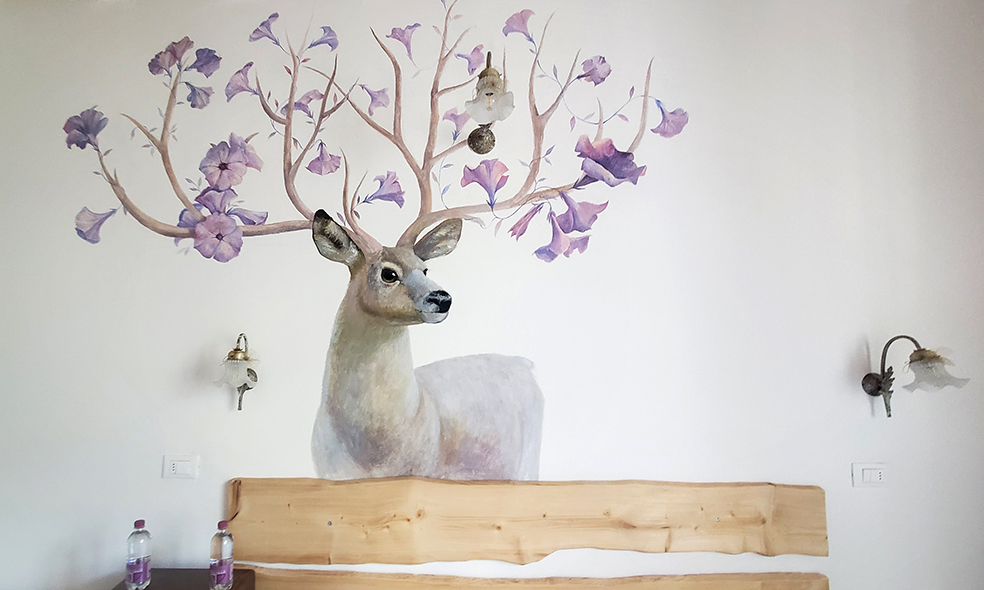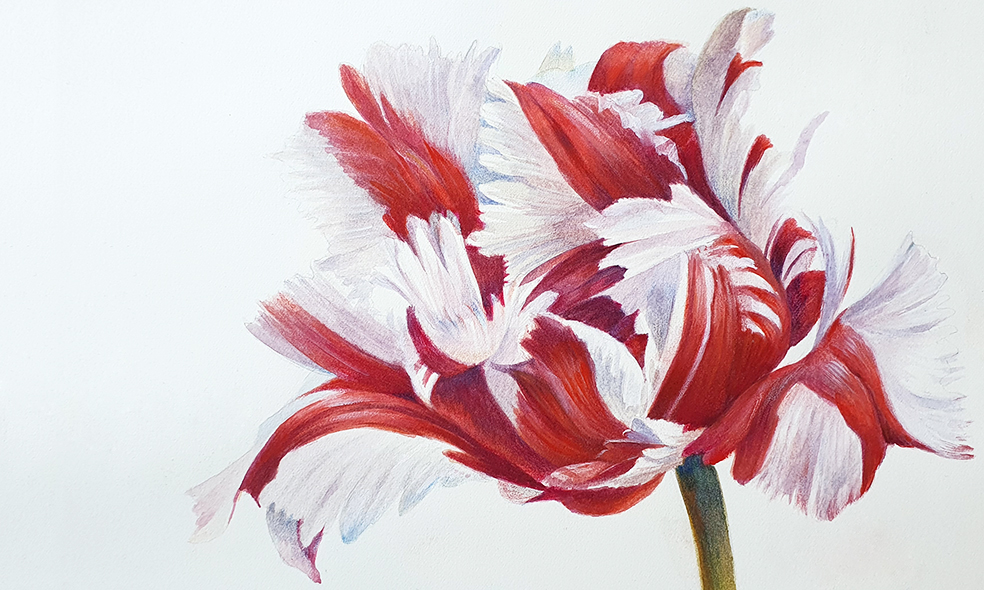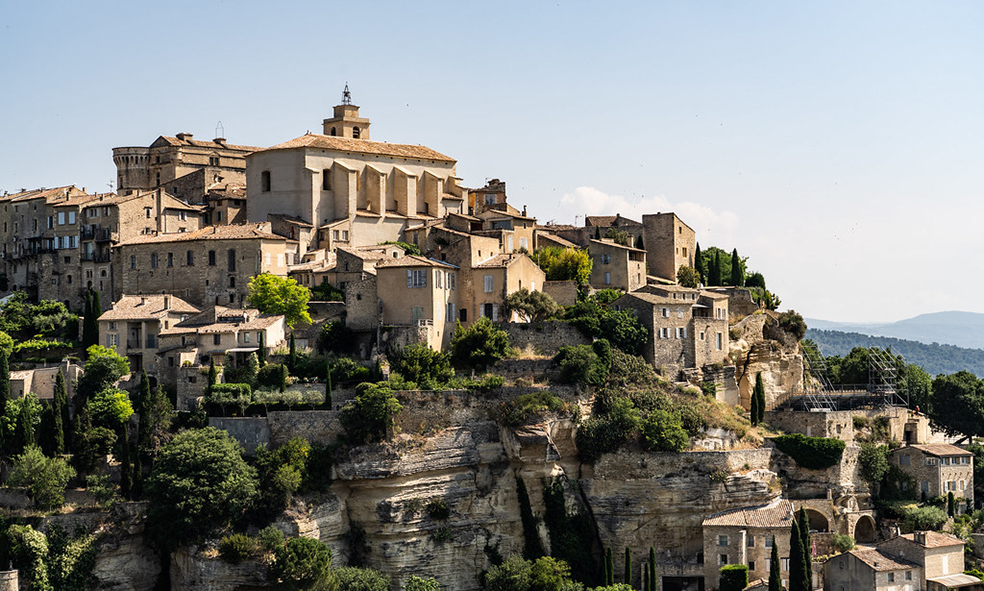Kiko Perotti is an RHS award-winning botanical artist. His passion for nature and travel took him around the world discovering secrets of ancient painting techniques high up in the Himalayan mountains. He is now painting and teaching back in his homeland, Italy, where he has recently teamed up with sustainable clothing brand, Petal & Leaf for an organic range of beautiful wearable art.
Interview by Sam Clark
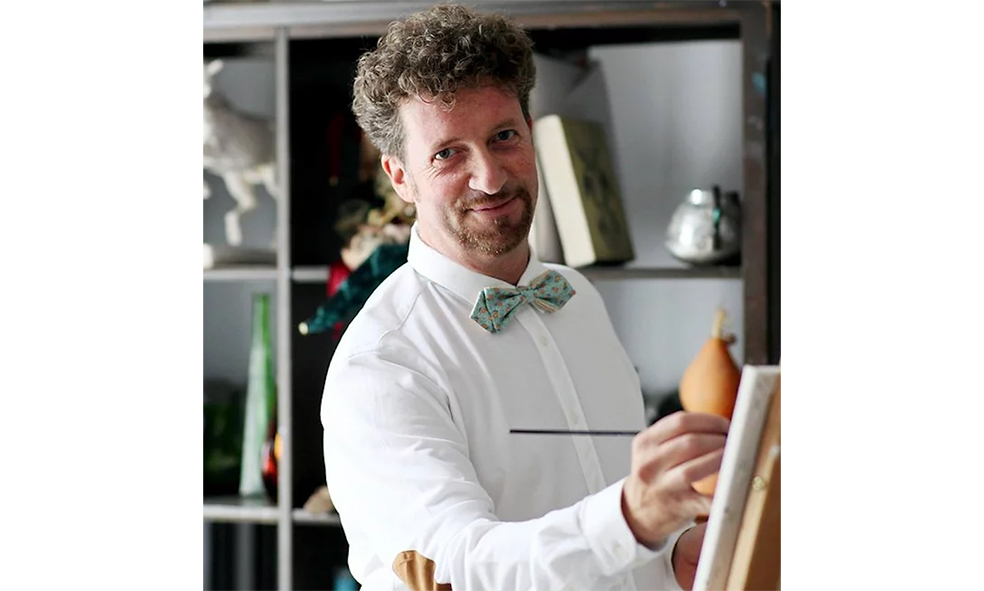
SC: It’s impossible to imagine you without a brush in your hand Kiko. How did you start painting?
KP: Painting has always been a big passion. I still have a medal I won when I was 8 years old in a Walt Disney competition. I painted a farm scene with a lady looking after chickens.
I remember the moment I seriously fell in love with painting. I had a wonderful art teacher. Her name was La Signora Martini, and she taught me that grass is vertical, not just a horizontal strip in the landscape. Oh my God, it’s true! It sounds obvious, but it opened up this door to me, a new way of looking at things. It was amazing.

A long journey to the canvas
SC: What took you from this talented young painter to the accomplished artist you are today?
KP: Some difficult times lead me away from painting. After moving around, I spent several years trekking in the Himalayas. I find walking a great meditation, especially if you do it by yourself. Lost in my thoughts, I realised what I was missing. I needed to discover painting again.
I met a Tibetan thangka artist who invited me into his studio to teach me the traditional skills of these religious paintings. As soon as I sat in front of a canvas, boom, I knew what I had been missing and what I would do with my life. It was 1996. I still remember the feeling of finding something you lost. I’ve never had any doubts since then. I kept on doing what I had lost from my childhood.
SC: Thangka are complex paintings layered with religious iconography. How long did you spend in Tibet studying these ancient skills?
KP: I spent several months at the studio in Nepal until bureaucratic visa restrictions forced me to move on. I found myself in Rajasthan, where Indian miniature painting became another big passion of mine.
Learning skills from the 9th century
SC: Indian miniature painting has a history dating back well over a thousand years ago. They take an incredibly fine skill and eye. How did you train your mind, and body, to achieve the high level of detail?
KP: In India, as soon as you go off the beaten track, you’re in a different world. I managed to find an artist willing to teach me. There were no hotels in his village so he invited me into his home.
I was the only foreigner in the village. There was nothing there, no distractions: just painting and more painting. We’d wake early every day and paint into the evening, sitting on a marble floor, which later cost me three slipped discs! It was a complete immersion in Indian culture, and I loved it! It was a truly fantastic time.
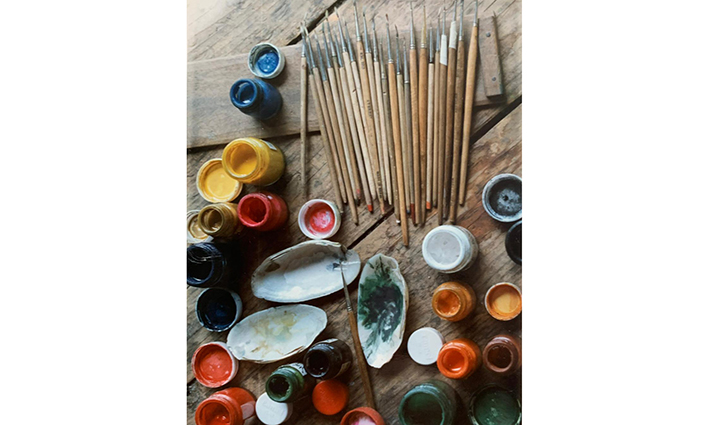
SC: That sounds exceptionally focused. Mirroring the intensity of the art you were painting in the intence life you were living. It must have been exhausting.
KP: After a year or so with my teacher, my mind started to think about my love for nature and flowers. I needed a place to be by myself and that’s when I returned to the Himalayan mountains. I was lucky to find a spot where I was able to build a small house. There was such beauty, it made a wonderful open studio. It had a balcony larger than the house itself. I lived there very happily for a couple of years, painting the flowers, plants and wildlife around me.

From high altitudes to high accolades
SC: Kiko, how did you get from the mountain tops to being awarded a coveted Silver-Gilt Medal at the Royal Horticultural Society, RHS?
KP: I love flowers, and botanical painting is something I have always found fascinating. I enjoyed the challenge of using the skill I had learned to create a botanical painting. In some ways, it was quite different. Botanical paintings have to be totally precise and technically and scientifically correct.
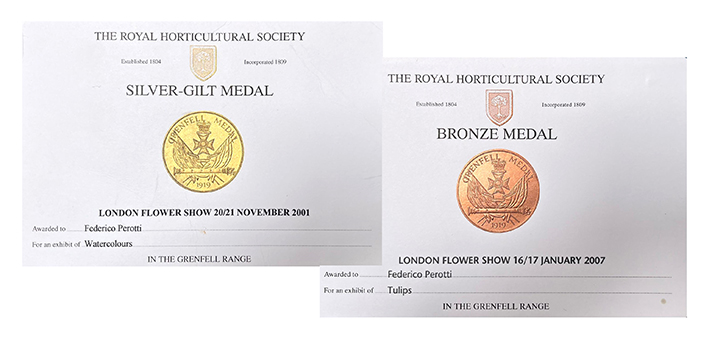
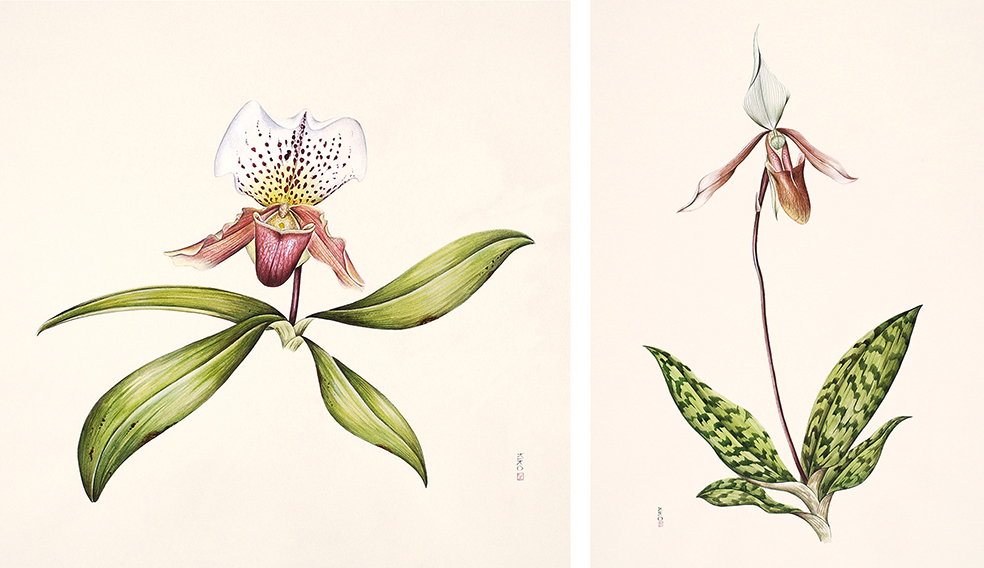
Time with the brush
SC: Your paintings have great depth and detail. How long does it take to paint them?
KP: It depends on the size, it usually takes three or four days, painting for six to seven hours a day. The paintings for the t-shirts each took a couple of days.
SC: Do you still use the infamous brushes with a single-hair from the Indian miniature techniques?
KP: You need at least two hairs to hold the paint, but I use Western-style brushes more now. They can be quite thin to get the fine detailing.
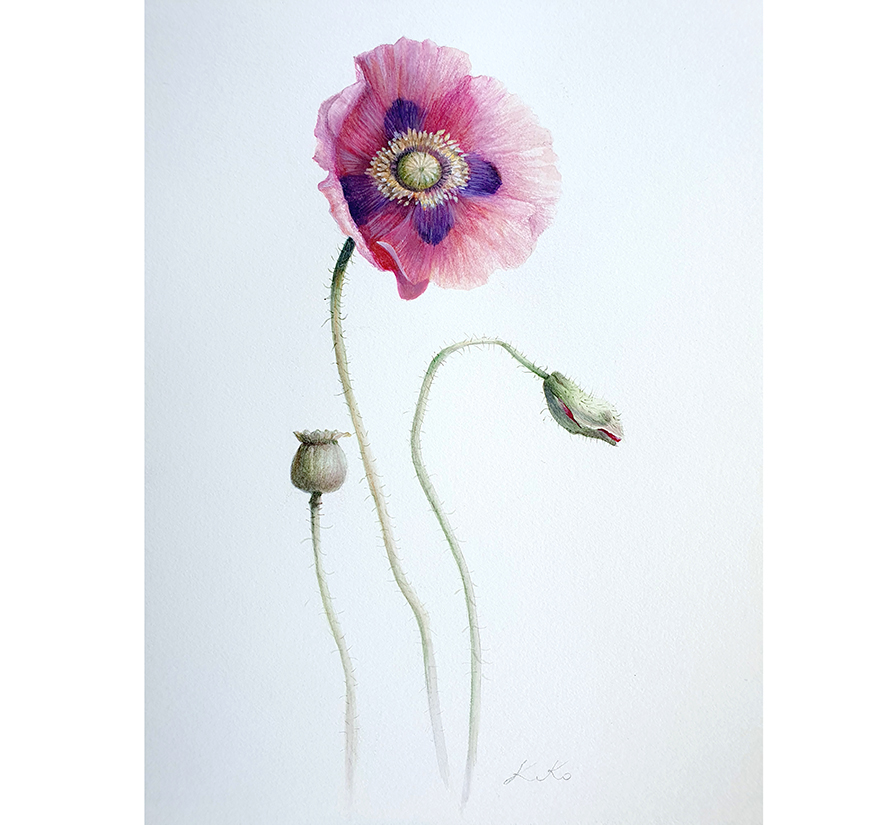
Advice from student to teacher
SC: You founded your art schools with your wife and well-known artist, Sveta, where you’ve taught many people to paint. What advice would you give aspiring artists to get started?
KP: If you want to paint flowers, my first tip is to fall in love with flowers! Study the shape, this is fundamental. I always teach my students that in paintings you can bring everything down to about five shapes. Make some sketches with a pencil and see if you can add volume by filling in areas of light and shade. Then give it a try with the brushes.
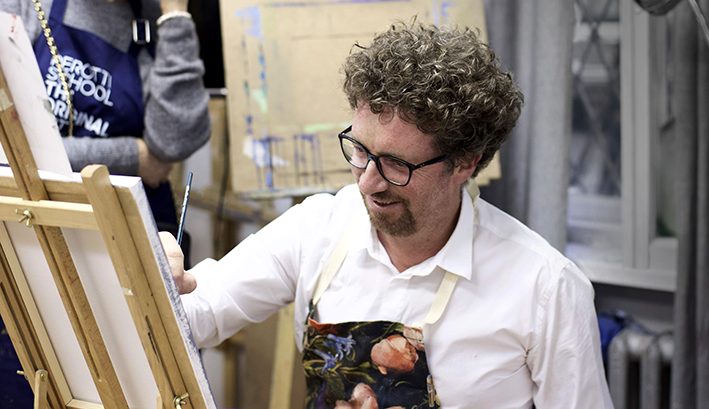
SC: I can’t leave you without asking, what’s your favourite flower?
KP: I love all flowers, too many to mention! Tulips are very special to me. I’ve been painting them throughout my life. In the mountains of Nepal and around the world. I was so happy to paint the tulip for the t-shirt project with Petal & Leaf.
Kiko has painted three stunning flowers which are featured beautiful T-shirts and hoodies by the organic and sustainable clothing company, Petal & Leaf.
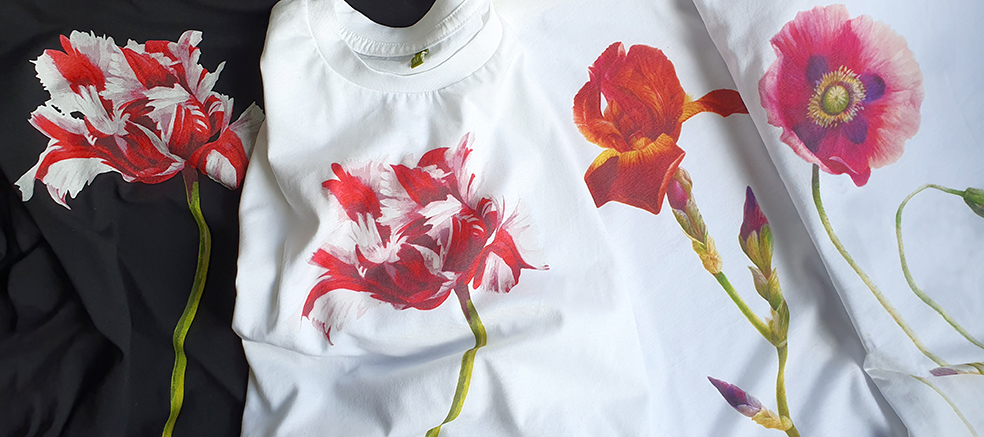

Tshirts, hoodies and totes available at Petal & Leaf
Find out more about the art school and painting tours by Kiko and his wife, Sveta on their website
You may also like to read about our visit to the fabulous Hotel Baldo in the hills around Lake Garda, Italy where Kiko and Sveta Perotti have brought the walls to life with wonderful frescos. Click here to see more
